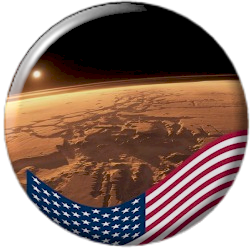
doi.org/10.1038/s41550-025-02573-z
Credibility: 989
#Pluto
Pluto, the dwarf planet at the edge of the solar system, has an atmosphere full of surprises
New observations from NASA’s James Webb Space Telescope show that particles from Pluto’s atmosphere are traveling through space and “painting” its largest moon, Charon, with reddish hues.
This unique process, never seen anywhere else in the solar system, could help us understand what Earth was like billions of years ago, when life was just beginning.
The discovery, published June 2 in the journal Nature Astronomy, confirms a bold idea proposed a few years ago.
An atmosphere unlike any other
Pluto’s atmosphere is made up of tiny particles of nitrogen, methane and carbon monoxide.
These particles absorb sunlight, heat it, cool it and release heat, controlling the dwarf planet’s entire “energy budget.” This makes Pluto’s sky completely unlike any other in the solar system, acting as a haze-powered “climate engine.”
In 2015, NASA’s New Horizons spacecraft flew past Pluto and revealed an icy world with mountains, valleys, nitrogen and methane glaciers, and an atmosphere full of complex chemistry.
At the time, scientist Xi Zhang of the University of California, Santa Cruz, suggested that the haze in Pluto’s atmosphere was key to understanding its climate.
He proposed that these particles heated and cooled the atmosphere, emitting strong infrared radiation that could be detected by a powerful telescope.
“It was kind of a crazy idea,” Zhang says, noting that many colleagues were skeptical at the time.
But he was confident that with the right equipment, his theory would be proven.
The James Webb Telescope Gets In On The Action
That chance came with the launch of the James Webb on December 25, 2021. The telescope, much more advanced than previous ones, was used to observe Pluto and Charon in detail never before possible.
In 2023, the James Webb captured images and infrared spectra (a kind of chemical “fingerprint”) that confirmed Zhang’s theory.
The observations showed that Pluto’s haze does indeed emit infrared radiation, just as he predicted in 2017.
“We are very proud, because our prediction was confirmed in just a few years, something rare in planetary science,” said Zhang, excited about the result.
Pluto “breathes” and Charon changes color
The new James Webb observations also revealed something surprising: particles from Pluto’s atmosphere, such as methane molecules, are escaping into space and reaching Charon, its largest moon.
Charon has no atmosphere, and its surface is covered mostly by water ice mixed with ammonia compounds.
When Pluto’s methane molecules reach it, they undergo chemical reactions that turn Charon’s polar regions reddish in color.
It’s as if Pluto is “breathing” and its moon is “absorbing” that breath.
In addition, James Webb has observed seasonal changes on Pluto’s surface, with icy material moving from one place to another as the dwarf planet rotates.
These observations have helped scientists better understand how heat and cold shape Pluto’s landscape and how its atmosphere interacts with Charon.
What does this have to do with Earth?
Pluto’s haze isn’t just a curiosity.
It’s similar to the atmospheres of other celestial bodies, such as Neptune’s moon Triton and Saturn’s moon Titan, which also have nitrogen and hydrocarbons.
Studying Pluto could help us understand how these places work.
More importantly, Pluto’s atmosphere may be a window into Earth’s past.
About 2.4 billion years ago, our planet had no oxygen in its atmosphere, but was rich in nitrogen and hydrocarbons, like Pluto today.
Even then, life was already there.
By studying Pluto’s chemistry and haze, scientists may be able to learn how Earth remained habitable at that very different time.
A step closer to understanding the cosmos
James Webb’s discoveries show that Pluto is an active and complex world, despite being so far from the Sun.
The confirmation of Zhang’s theory and the new insights into the interaction between Pluto and Charon are a reminder of how science can turn “crazy” ideas into facts.
With James Webb, we are beginning to unlock the secrets of distant worlds – and perhaps even our own past.
Published in 06/24/2025 18h46
Text adapted by AI (Grok) and translated via Google API in the English version. Images from public image libraries or credits in the caption. Information about DOI, author and institution can be found in the body of the article.
Reference article:
Original study:
| Geoprocessing Drone Systems HPC |

| ERP and CRM Systems Mobile Systems AI |


